I’ve been to Singapore before, a couple of years ago on my first trip to Asia we were here for a few days, using it as a launchpad for trips to Thailand and Hong Kong.
The first thing you notice about Singapore is that it’s hot. Like not just warm, but H-O-T. Imagine the worst heat wave day with heavy humidity, but imagine it like that ALL THE TIME. It’s a relentless, punishing heat. At first it’s great to feel that humidity, but after only a few minutes everything starts sticking to you – the heavy suitcase and backpack, your clothes, your skin to itself, etc. You learn very quickly a few things – dress very lightly in breathable articles, always carry water with you, and try to avoid walking anywhere, if at all possible, and if it’s unavoidable, try and walk where you can take regular breaks in air conditioned comfort. Luckily Singapore is dotted with malls, and public transit is prevalent and reliable.
The thing with the air conditioning is that it’s almost too cold in most places, so you freeze while you’re inside, then wilt from the heat outside.
One other thing you notice is how green everything is. There is lush foliage everywhere!
Flight arrival was very early – we were at the hotel by 8am. Luckily they had a room for us even at that early hour, so we were able to check in right away to get settled.
Singapore has a very interesting history, which was mostly hazy to me prior to my last visit here. I encourage you to read up on it sometime, but one of the basic facts of life here is that the people here have had to overcome a lot to get to where they’re at today – from Japanese occupation in WWII to how to house and feed so many people in a tight environment where the conditions are rather harsh, all while keeping various cultural groups (who have a history of conflict) living and working together in harmony.
One thing the government did in the middle of the last century was to create centralized food centres in order to have more hygenic conditions for food preparation, instead of the unsanitary, unlicensed street food vendors of the era. These food centres are basically open-air food courts with independently-owned stalls that anyone can open a restaurant in – there are no big chains here. Food here is also extraordinarily cheap – we had a dish of Hainanese chicken rice for about $2.50 CAD. It appears that most average Singaporeans eat at these food centres rather than at home. And at these prices, and with the food quality available, why would anyone go through the bother of cooking for themselves?
Singapore is also a great jumping-off point for Asia due to its great airport with excellent connections to anywhere in the region, western services, and English being the primary language. If you ever need to travel to this part of the world, I would highly encourage you to spend a couple of days here.
First stop was Fort Canning Park, which is a nice patch of green space in the middle of the central city, with some leftover remnants of its fortress past.
One thing we noticed was that it was nearly deserted, even in the late morning, except for a few other obvious tourists. Locals are smart and know that it’s silly to try and do any outdoor activities at mid-day. We were drenched messes very quickly.
On the other side of the park was the National Museum of Singapore which has an excellent exhibit on Singapore’s history – from ancient times up to today. It was easy to kill half a day here.
The rest of the day was spent eating and catching up on sleep. Another 6-hour time zone shift from Europe meant we were pretty groggy by mid-evening.
On the second day we visited Marina Bay – a newer district of the city built through land reclamation into the ocean (like many other parts of Singapore), and seems to be mainly geared to tourists – it has a giant casino resort called Marina Bay Sands which houses a huge upscale shopping mall complete with indoor skating rink.
Singaporeans are not allowed to gamble unless they pay an entry fee (around $100 per visit), however foreigners are allowed to get in free. This is an interesting way to try and cut down “vice” among the locals, but still welcome the tourist dollars from foreign high-rollers.
Across the street is the Gardens By The Bay, an impressive park space that includes gigantic, man-made tree sculptures, and a couple of large domed indoor gardens. The park was beautifully landscaped and had lots of interesting flowers.
Unfortunately, we couldn’t linger as long as I would have liked, since it was simply too hot. (Are you sensing a theme, here?).
The rest of the day was spent eating our way through the city, and in the evening we met up with my friend Esther and her boyfriend Julian, who moved here from Toronto. It was great to catch up with them and get their perspective on being ex-pats in a city with that has a large population of ex-pats.
Some random observations on life here:
- Apparently Singapore has the most pools per capita of any city in the world. This is nearly a necessity of life to escape the heat, so it’s not shocking, but a quirky fun fact.
- For a city with such great public transit (subways are prevalent and go anywhere in the territory, and several new lines are under construction), and where there are huge surcharges to purchase a private car (someone said $100,000 is necessary for licensing), pedestrians are definitely second class citizens. Cars get wide roads and pedestrian crossings are hard to find. In fact, they’re usually held up in the sky on bridges over most roads. This sounds convenient at first blush, but actually climbing the stairs to go up and over is time consuming, and strenuous in the hot environment. Another example – we took a bus to get to a food center, which was located on the opposite side of a large traffic roundabout. Instead of a 2-5 minute direct walk, we had to take a circuitous route via pedestrian bridges and underground passages and it took about 10 minutes.
- The gap between rich and poor seems more pronounced than in your average Canadian city, with lots of shops catering to the wealthy (think Yorkville on steroids).
- One strange aspect to Singapore is it still upholds the death penalty, and even has corporal punishment for various offences. Their laws manifest themselves in some strange ways, such as this warning on the back of their customs card you fill in before landing:
And this sign outside one of their water reservoirs:
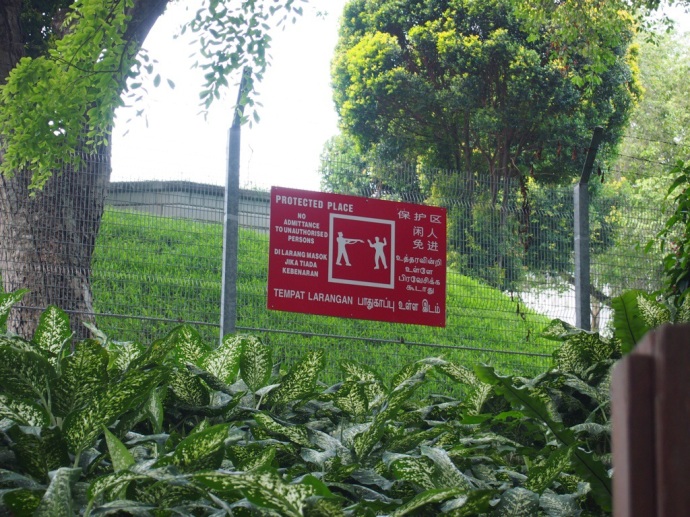
This also demonstrates yet another interesting aspect to the city – its four official languages: English, Mandarin Chinese, Malay, and Tamil, with English being the common language, and language of business. There’s also an interesting local dialect called Singlish which is basically English with a mix of these languages.Overall, however, Singapore is an extremely liveable, cosmopolitan city, with plenty of amenities to appeal to its residents and tourists alike.
With that, here are some more photos around Singapore. Tomorrow, Hanoi!

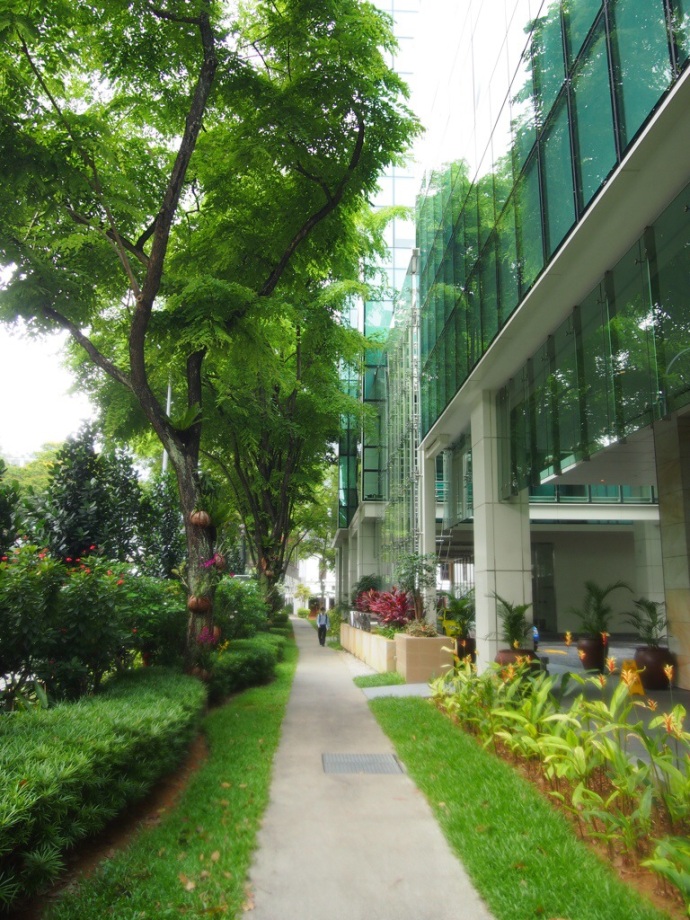
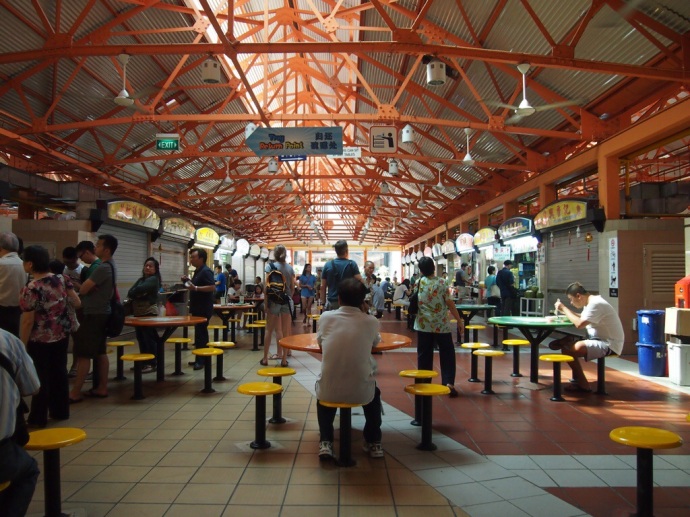
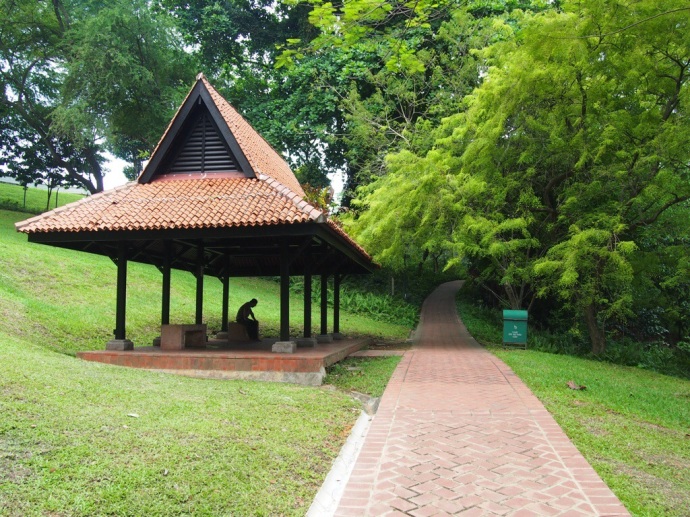
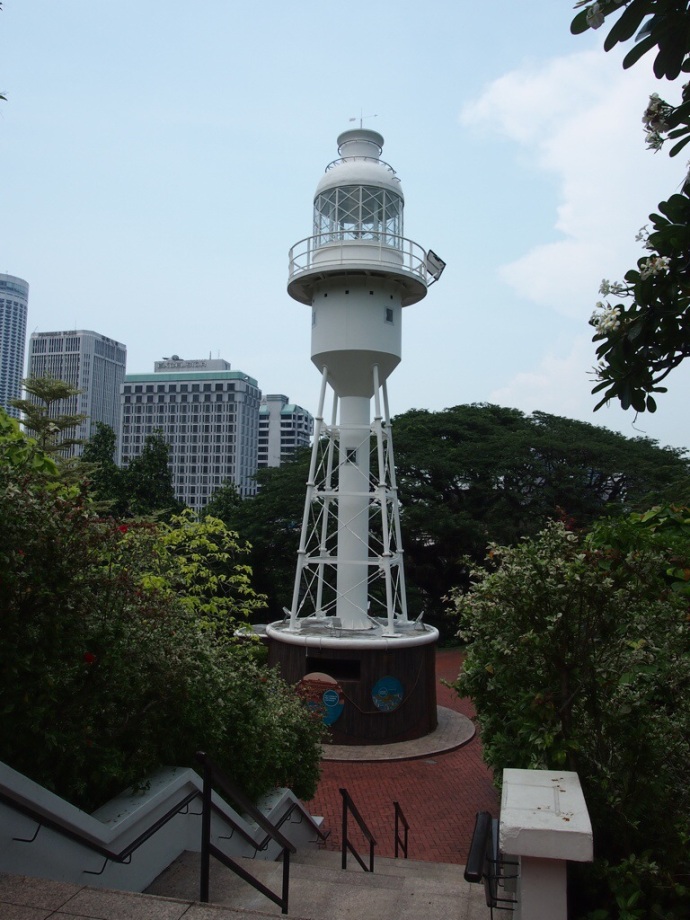
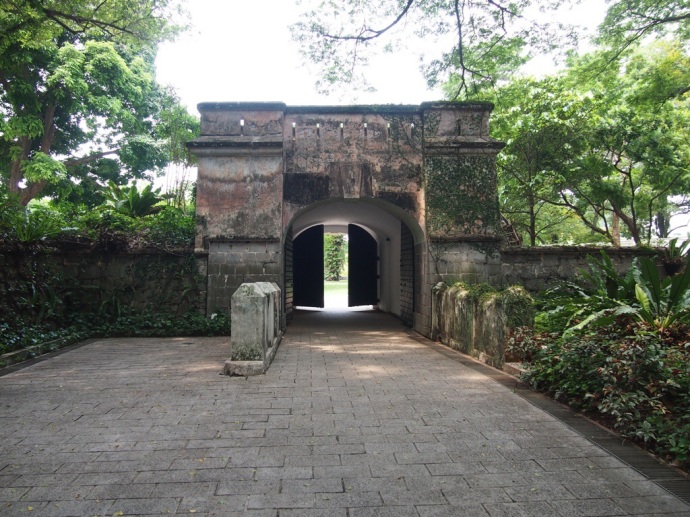
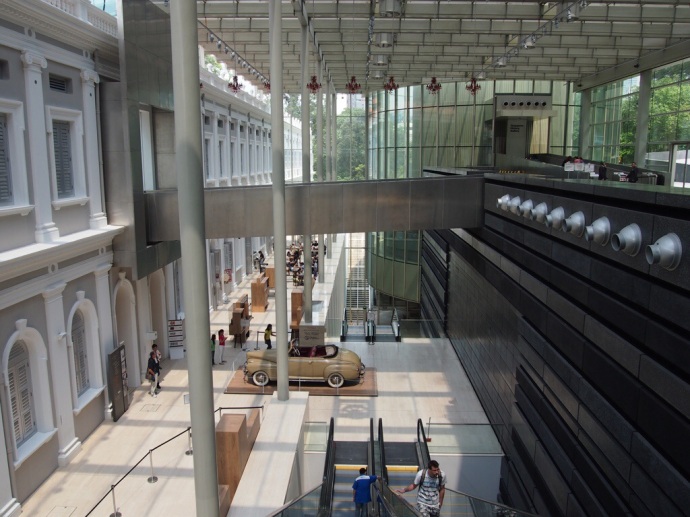
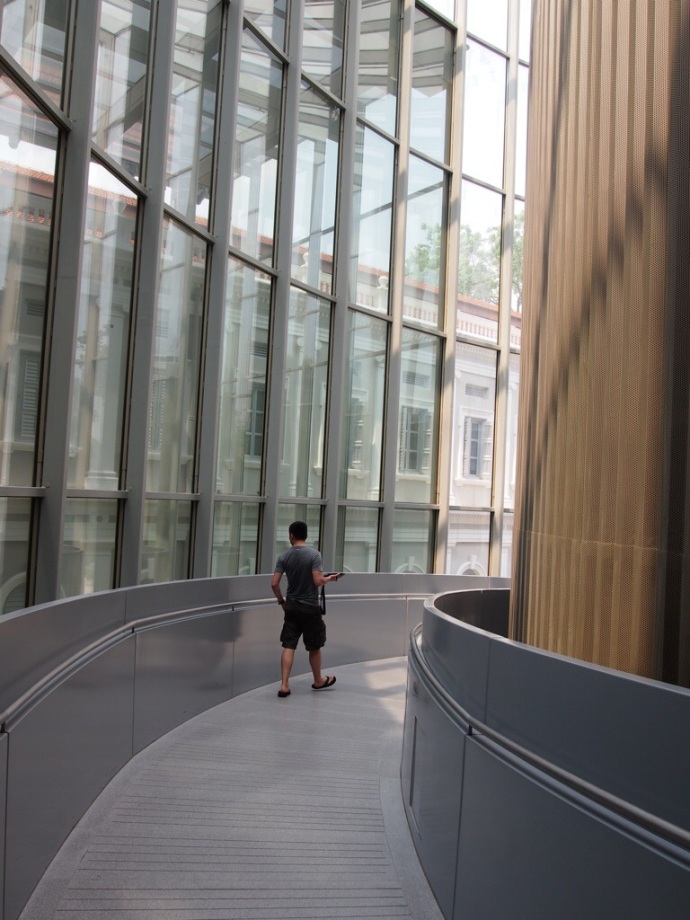
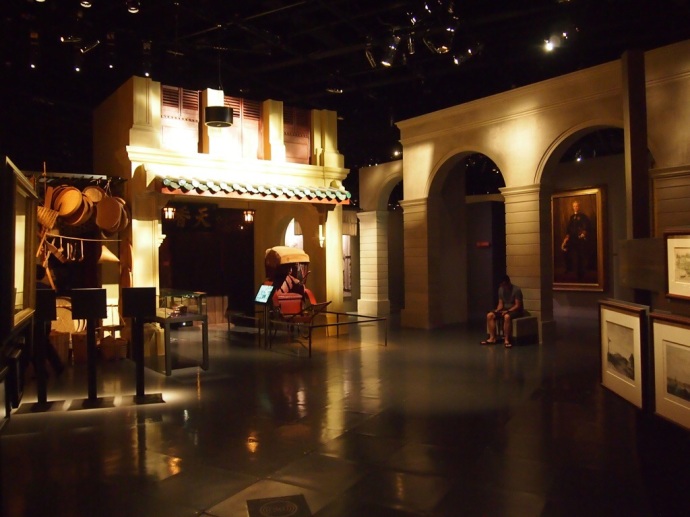
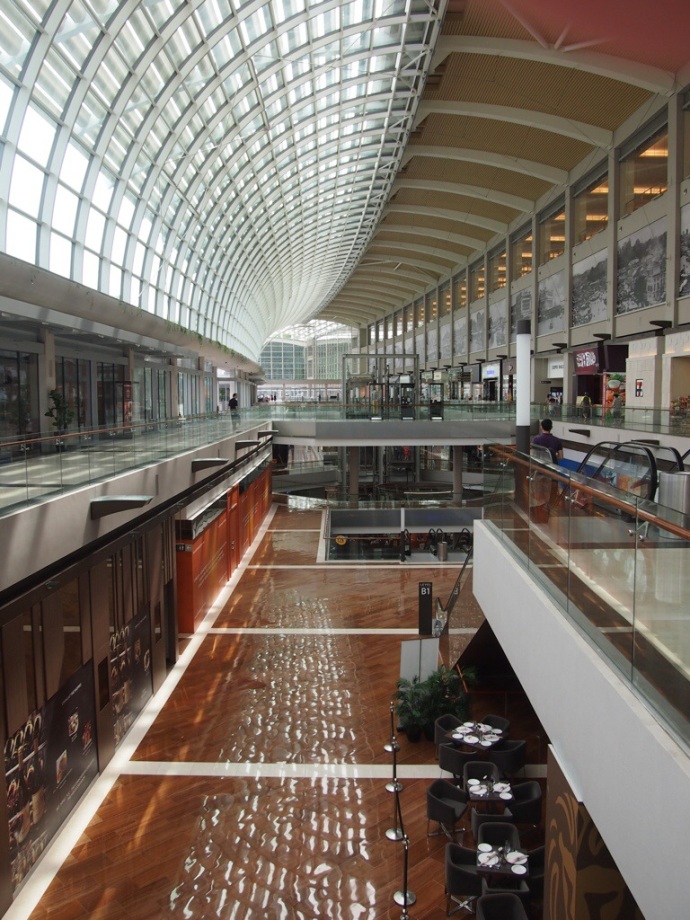
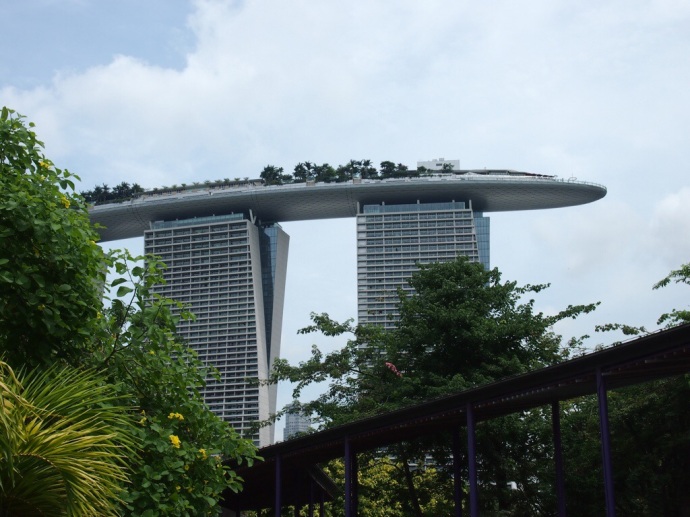
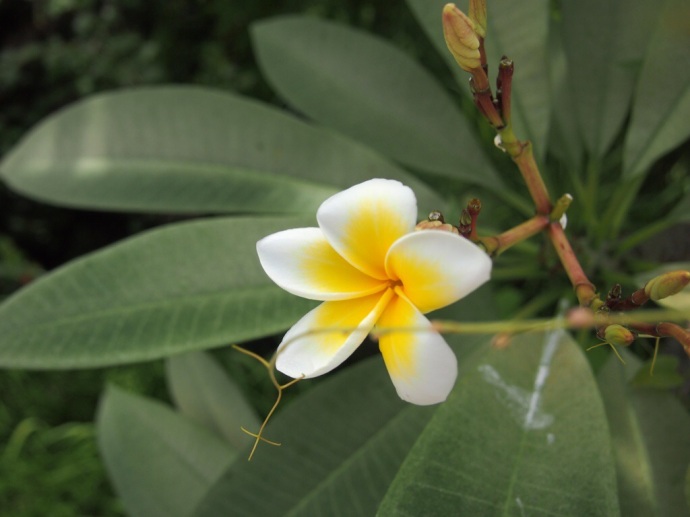
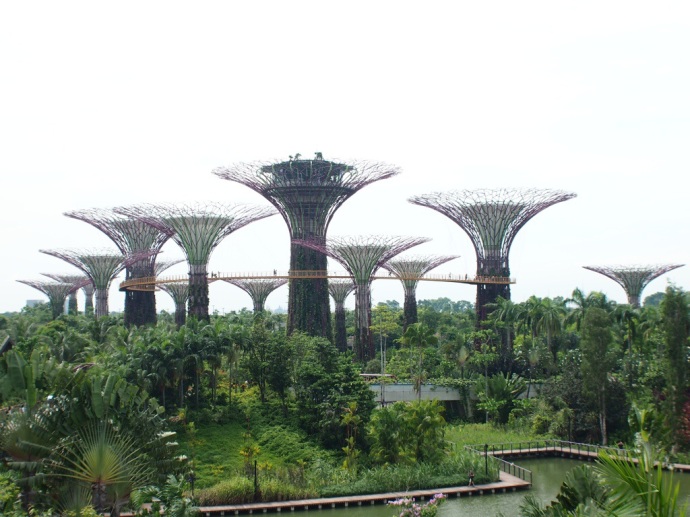
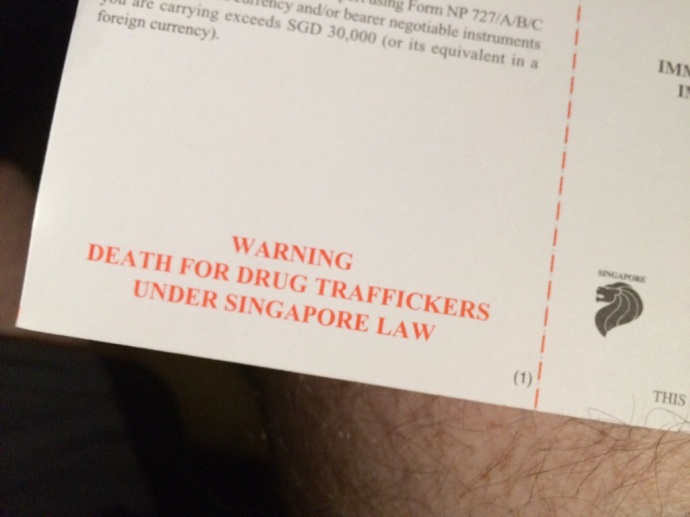
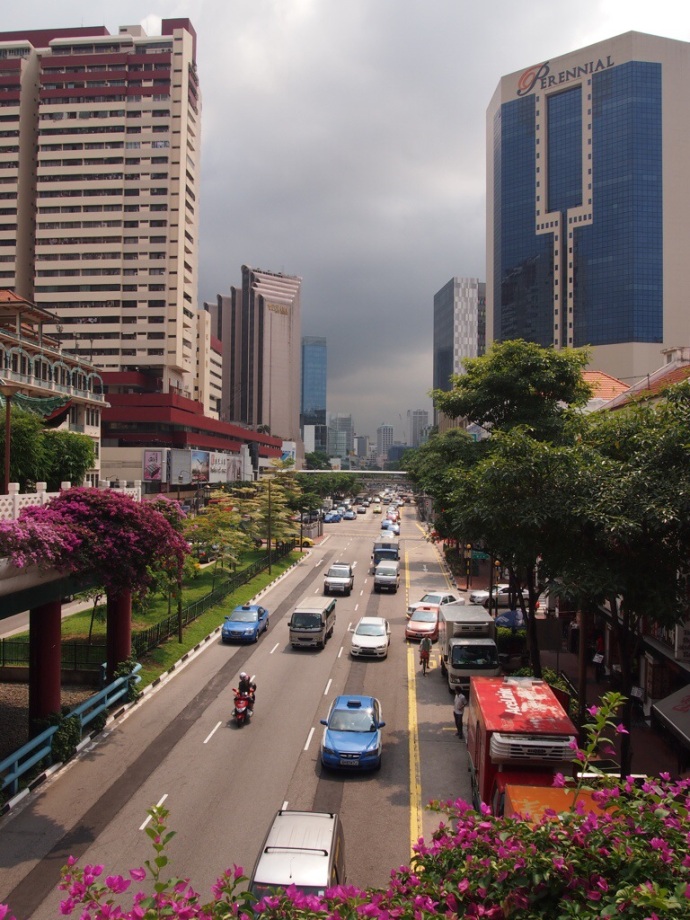
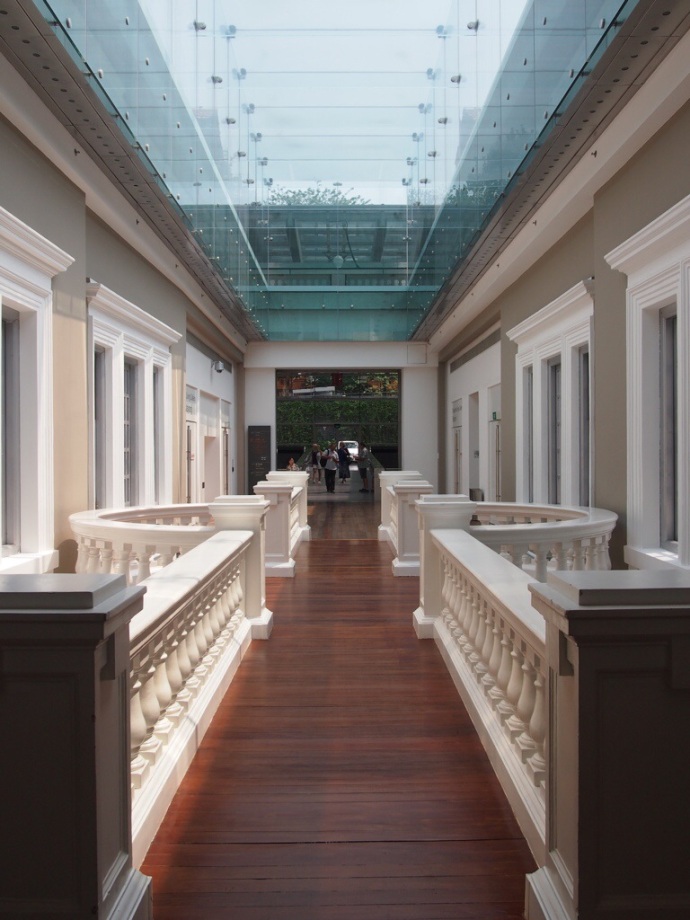
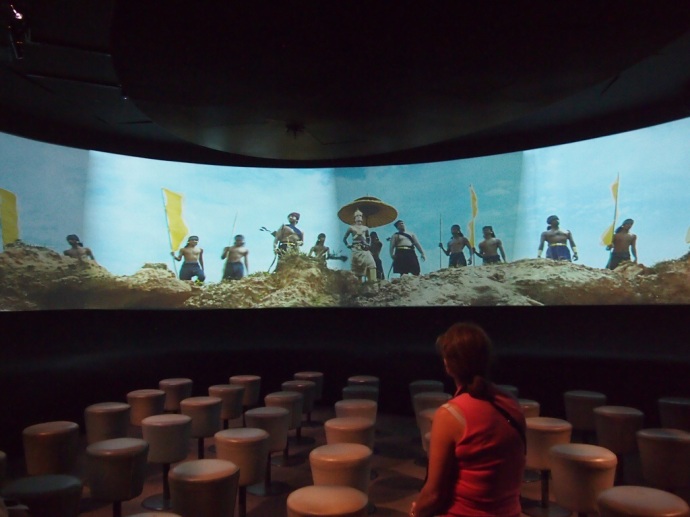
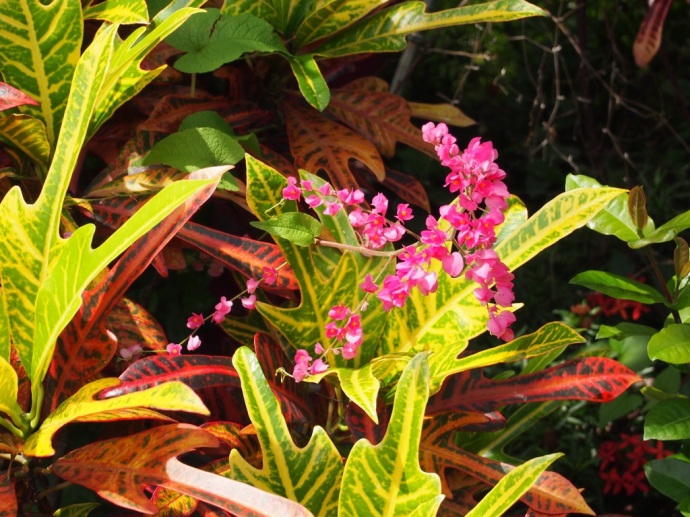
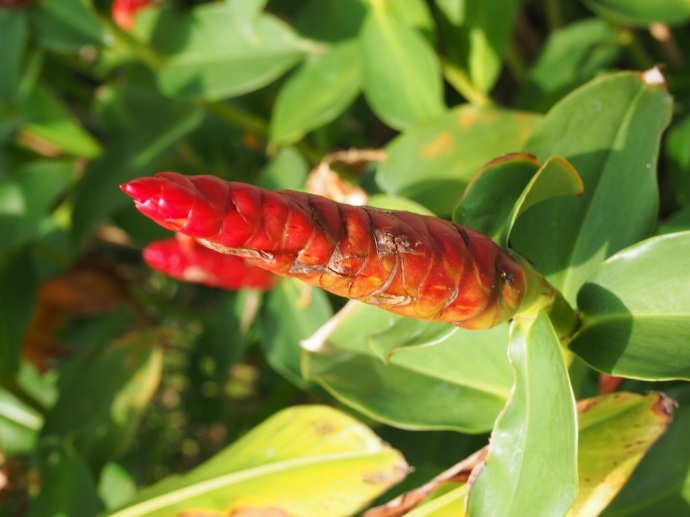
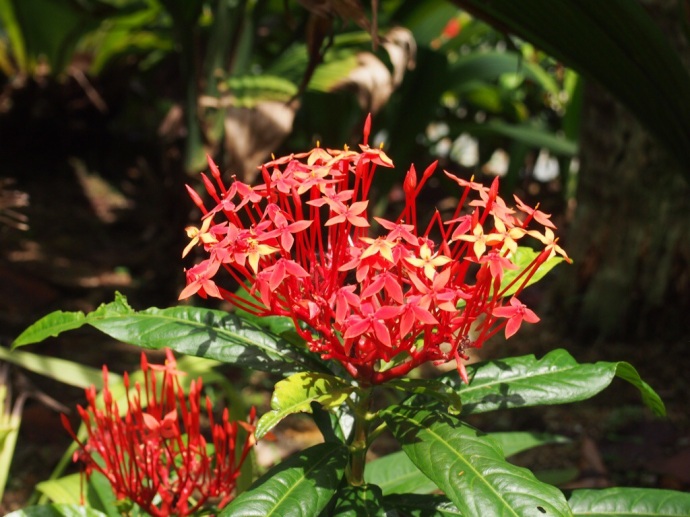
Wow , looks really beautiful there Chris.